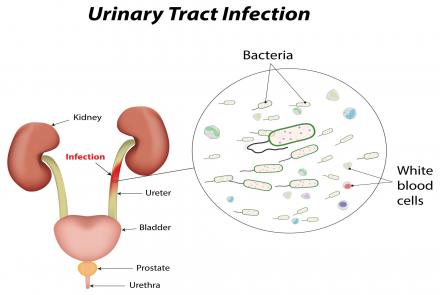What’s going on down under? Dr Shital Raval has all the answers on vaginal health - from vaginal discharge to vaginal infections and yeast infections.
Is all vaginal discharge bad?
NO, a clear, or watery discharge anytime during the month is normal. Around the ovulation period, this discharge or cervical mucus may become thicker and stickier. This is normal and aids as a lubricant during sexual intercourse.
Coloured discharge or abnormal looking discharge accompanied by foul odor is…
Latest Stories
- Treatment The doctor may recommend some of the following: Lifestyle changes can help relieve acute (short-term) insomnia. These changes might make it easier to fall asleep and stay sleep. 1. Adopting new habits to help you sleep, for instance: Make sure your bedroom is quiet, dark, and cool. Noise, light, and heat can interfere with sleep. Stick to a regular sleep schedule. Support your biological clock by going to bed and getting up at the same time every day, including…
- The urinary tract consists of the kidneys, ureters (which connect the kidneys and the bladder), bladder, and urethra. Urinary tract infections (UTIs) can occur in any part of the urinary tract. Most UTIs are caused by bacteria. They can also be caused by fungi or viruses. UTIs are the second most common type of infection in humans. The National Kidney & Urologic Diseases Information Clearinghouse (NKUDIC) reports that UTIs account for over eight million doctor…
- What is ovarian cancer Ovarian cancer is cancer that develops in one or both the ovaries. It can then spread to other parts of the body. Cancer in the ovaries can also be a secondary cancer, the result of metastasis from a primary cancer elsewhere in the body. 7% of ovarian cancers are due to metastases while the rest are primary cancers that occur in the ovaries itself. Cancer occurring primarily in breast or in gastrointestintinal tract most often tend to metastasise to the ovaries. Ovarian…
- Dr Shital Patel answers all your questions on fertility – from upping your chance of natural conception to treatment options. 1. What can I do to improve my chances of getting pregnant naturally? Before planning to conceive, it’s important to make sure you are healthy and start on daily prenatal vitamins. Also avoiding stress, smoking, alcohol, substance abuse, certain medications etc will all help improve your chance of conceiving. 2. What is the fertile window period? The…
- What is depression It is a serious medical illness that affects one’s thoughts, feelings, behaviour, mood and physical health. It may be a lifelong condition in which periods of wellness alternate with recurrences of illness. Depression is the leading cause of disability worldwide with more than 350 million sufferers, according to the World Health Organisation. The number is growing in all age groups in every community, and with many young people falling prey to…
- Find out this and more from Dr Shital Raval 1. Can excess weight cause osteoarthritis? Recent medical opinion points to excess weight as a cause for osteoarthritis. It is also known that obesity makes the symptoms worse in patients with existing osteoarthritis. This is because obesity tends to decrease mobility and puts stress on the back, hips, knees and feet, all the body parts that are commonly affected by osteoarthritis. Over time this stress can cause the…
- What is stress Stress is what happens when you have too much to handle. The body goes into fight or flight mode. Your heart rate may go up and you may breathe faster or sweat more. This response is fine within normal limits. But beyond that, it can be harmful. Stress is a global issue with 77% of people in just the US saying that they experience physical symptoms caused by stress, according to Statistic Brain, a research institute.
- What is anxiety disorder Everyone feels anxious at some points in their life. But the anxiety passes once the stressful situation is over. For people with anxiety disorder, the feelings of anxiety are ongoing and don’t subside. They cause great distress and get in the way of them leading a normal life. As many as 450 million people suffer from this disorder and nearly 1 million people commit suicide every year. 1 in 4 families worldwide is likely to have at least…















